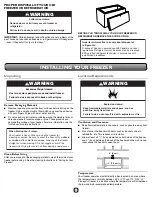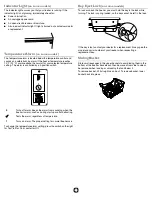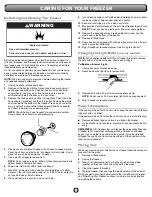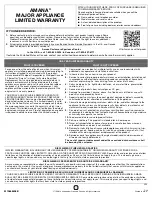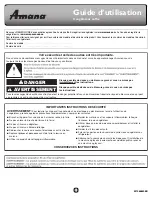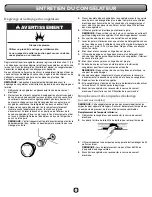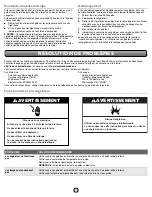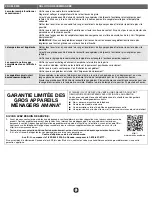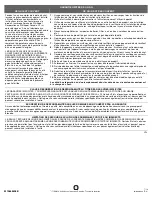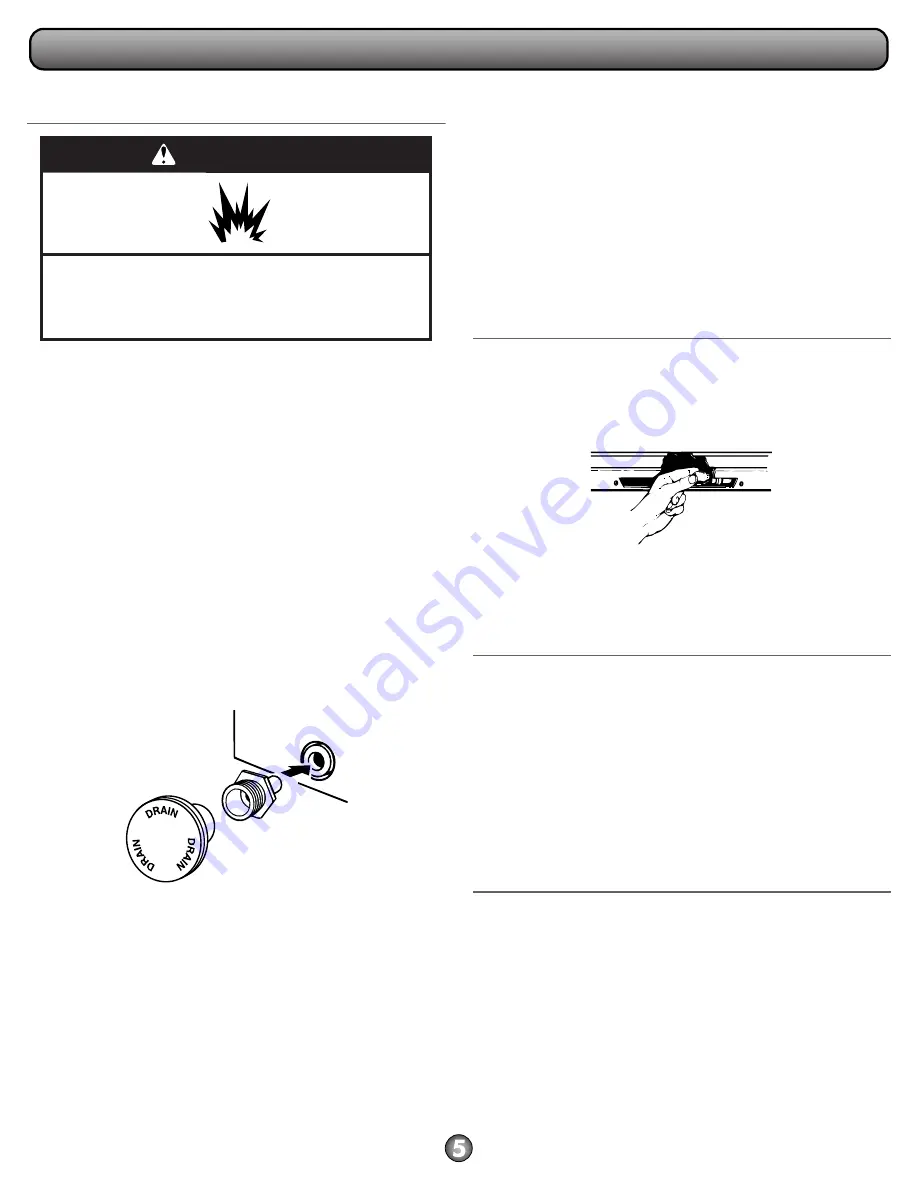
Defrosting and Cleaning Your Freezer
Defrost and clean your freezer when frost has built up to about
¹⁄₄
"
(0.6 cm) thickness, and thoroughly defrost and clean your freezer at
least once a year. In high humidity areas, a freezer may need more
frequent defrosting and cleaning.
Do not use abrasive cleaners on your freezer. Do not use cleaning
waxes, concentrated detergents, bleaches, or cleaners containing
petroleum on plastic parts. Damage can occur.
NOTE: The drain cap must be removed before defrosting the freezer
and replaced securely afterward.
1. Unplug freezer or disconnect power.
2. Remove all frozen food. Wrap frozen food in several layers of
newspaper and cover with a blanket. Food will stay frozen for
several hours. You may also store frozen food in a cooler,
additional refrigerator-freezer, or in a cool area.
3. Remove the drain cover by pulling it straight out. Then insert the
hose adapter (provided) into the drain outlet. Remove the plastic
cap from inside the bottom of the freezer. Place a pan under the
drain, or attach a hose to the threaded end of the hose adapter
and direct the water into a separate drain.
NOTE: Check the drain pan frequently to avoid water overflow.
Have a second pan handy for easier emptying.
4. Place pans of hot water in freezer with lid open to speed melting.
Directing air from an electric fan into freezer will also help. Do not
place fan or any electrical device in freezer.
5. Use a plastic scraper to remove frost.
NOTE: Do not use an ice pick, knife, or other sharp-pointed tool to
defrost freezer. Damage can occur.
6. Wipe water from walls with a towel or sponge.
7. Wash the inside walls with a solution of mild detergent in warm
water or 2 tbs (26 mg) baking soda to 1 qt (0.95 L) warm water. Do
not use abrasive or harsh cleaners.
8. Rinse well and wipe dry with a clean soft cloth.
9. Use a clean sponge or soft cloth and mild detergent in warm water
to clean outside of freezer, door liner, and gasket.
10. Rinse well and wipe dry with a clean, soft cloth.
11. Wax painted metal surfaces on the outside of freezer to avoid rust.
NOTE: Do not use wax on plastic parts. Wax may damage them.
12. Remove the hose adapter and replace the drain cover and the
plastic cap in the bottom of the freezer.
13. Replace all frozen food.
14. If your freezer is equipped with a temperature alarm, turn off alarm
for 24 hours after defrosting.
15. Plug in freezer or reconnect power. See “Using the Control.”
Changing the Light Bulbs
(on some models)
NOTE: Not all appliance bulbs will fit your freezer. Be sure to replace
the bulb with one of the same size, shape, and wattage.
To Replace Interior Light:
1. Unplug freezer or disconnect power.
2. Reach behind the light lens to remove bulb.
3. Replace bulb with a 40-watt maximum appliance bulb.
NOTE: Do not use an LED or colored light bulb as a replacement.
4. Plug in freezer or reconnect power.
Power Interruptions
If the power will be out for 24 hours or less, keep the door closed to help
food stay cold and frozen.
If the power will be out for more than 24 hours, do one of the following:
■
Remove all frozen food and store it in a frozen food locker.
■
If a food locker is not available, consume or can perishable food at
once.
REMEMBER: A full freezer stays cold longer than a partially filled one.
A freezer full of meat stays cold longer than a freezer full of baked
goods. If you see that food contains ice crystals, it may be refrozen,
although the quality and flavor may be affected. If the condition of the
food is poor, dispose of it.
Moving Care
When you are moving your freezer to a new home, follow these steps to
prepare it for the move.
1. Remove all frozen food.
2. Unplug the freezer.
3. Take out all removable parts, wrap them well, and tape them
together so they don’t shift and rattle during the move.
4. Clean the freezer thoroughly.
5. Tape the freezer shut and tape the electrical cord to the cabinet.
When you get to your new home, refer to the “Installing Your Freezer”
and “Operating Your Freezer” sections for information on installation
and setting the controls.
CARING FOR YOUR FREEZER
WARNING
Explosion Hazard
Use nonflammable cleaner.
Failure to do so can result in death, explosion, or fire.


